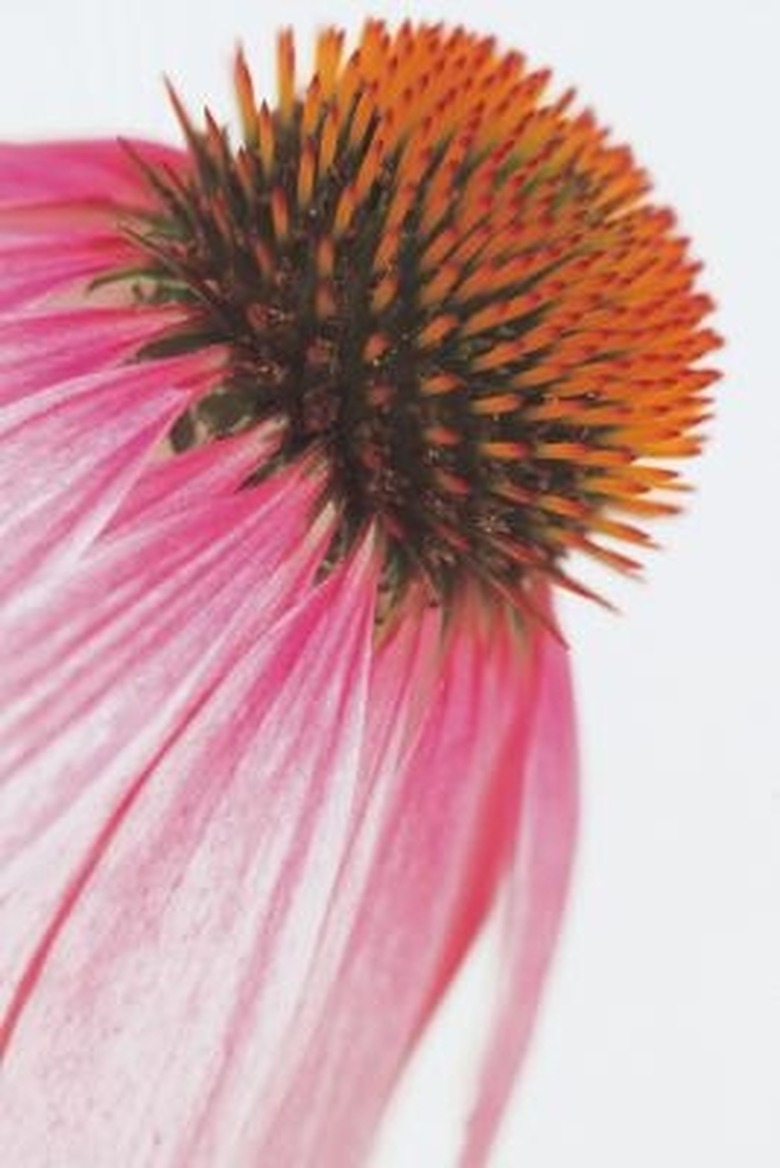Should Coneflowers Be Cut Back When The Bloom Dies?
One of America's most prized wildflowers, the purple coneflower (Echinacea purpurea) begins blooming in early summer and often continues into the fall. Deciding whether or not to do any trimming of the plant after flowering ends is completely up to you. You shouldn't cut back the plant severely when leaves remain green, but removing flowers — called deadheading — serves two purposes. Deadheading encourages additional flowering and tidies the look of the coneflower plant. Do not deadhead flowers if you want local songbirds to enjoy the seeds as a food source.
Benefits of Deadheading
Benefits of Deadheading
Cutting off the spent flower heads on a coneflower encourages the plant to produce more flowers a couple weeks later. As the first flush of flowers wane, cutting off the withering flowers focuses plant energy into the younger side flower buds. Otherwise, the plant expends resources to create seeds. Trimming off the old flowers also keeps the coneflower looking tidy and fresh, rather than displaying brown flower heads and drying stems.
Trimming Coneflowers
Trimming Coneflowers
Examine the coneflower before you do any trimming or cutting. When you deadhead a plant, you only want to remove the old flower and its stem. Avoid arbitrarily hacking back stems as you remove tissues that soon would have produced flowers.
Trace the dead flower head down its stem. Make the pruning cut one-quarter to one-half inch above a lower branching junction where other flower stems arise. Or, make the cut just above a lower leaf. New leaf or flower buds arise from the bases of the leaves near the top of the coneflower plant.
Deadheading in Autumn
Deadheading in Autumn
As summer winds down and coneflowers continue to produce flowers, it may be worthwhile to reduce deadheading from September onward. Let some old flowers brown and mature into ripe seed heads. Coneflower seeds make a delicious and convenient meal for various small songbirds, such as the American goldfinch.
While the birds may not immediately visit old seed heads for food, as the first frosts arrive and winter approaches, the birds will visit the coneflowers more for food.
Perennial Care Insight
Perennial Care Insight
Purple coneflowers don't tend to produce as timely a production of new growth or reblooming when they are severely cut back. Other summer-blooming perennials, however, do grow quickly and flower again after the entire plant height is cut back by one-third to one-half. Tickseed and garden phlox look much better when cut back after they complete their first flowering display. Coneflowers do not.
If you do cut back coneflowers after their first flowering, the amount of time it takes the plant to regrow leaves and stems often causes any resulting flowers to occur too close to the first fall frost. You end up with a reduced flowering display overall that year.
